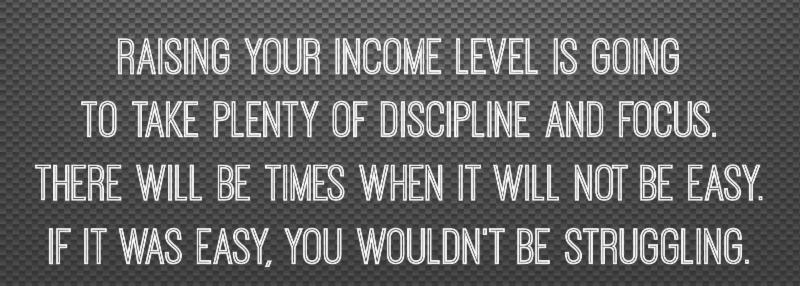Welcome to my blog! For the next few weeks, my marketing expert, Joelle Asmondy, will be filling in for me while I work on a large project. Joelle is a whiz with marketing. I can’t wait to see which helpful tidbits she shares with you! Enjoy!
 Let’s take a little poll:
Let’s take a little poll:
- How many of you own or run a salon?
- Which of you have a degree in business or have taken any business classes?
- Has anyone taken any management classes?
That sounds about right.
One of the best things about going to trade shows is meeting people. I get to talk to people from all over the country and I love it when they tell me their stories. We talk about dogs (of course), dog books (um, yeah!), and working with dogs (why not?). It’s a great way for me to stay in touch with our clients’ needs and find out what people are really thinking about.
Let me share a conversation that I have all the time…
“I became a groomer because I love dogs. At first, I just had a few clients. It started with friends and family, then their friends heard about me, and I got even busier. I got to the point where I had to hire someone just to keep up! Now I groom, book appointments, answer phones, run my own business, AND I have (one, two, three…) groomer(s) working for me!”
Sound familiar?
I love that so many dog grooming businesses have grown in such an organic way. It starts with a passion, grows because we’re needed, and thrives because we’re good at what we do. Our clients keep coming back because they know we love their pets and care about their health and safety.
The flip side to this is that very few people who own or manage these businesses have any formal training in supervising employees. We suddenly find ourselves in the role of “boss” simply because we needed help. For many, it’s a natural fit and the transition is painless. For others, the change is more challenging.
The question of the day is, “Are You a Good Boss?” The answer may surprise you.
I reached out to folks from the industry and asked them about the best qualities of their managers. Many of the answers were similar. Let’s look at the answers together and see if we can understand what it really means to be a good boss.
 “I’ve grown a lot by working here.”
“I’ve grown a lot by working here.”
Do you take the time to offer praise as well as constructive criticism? In busy salons, it can become easy to fall into the habit of communicating like our furry customers – we bark at each other instead of talking. Don’t let a hectic schedule become an excuse for bad manners or meanness. Remember, you’re not just running a business, you’re building a culture. Do you want yours to be team-oriented or hostile and withdrawn? Things don’t get done any faster or better with rudeness than with courtesy.
“She’s willing to try new ideas.”
If you want employees who step up and really help out, you have to be open to trying new things. “That’s the way we’ve always done it,” will quickly kill initiative. Employees who feel like they have input into bettering the process tend to stick around longer and contribute more to the overall business. After all, isn’t that what you need?
“He’s organized.”
If you are constantly running late, running out of stock, and running out of patience, you could be running yourself right out of business. Let your team help you get things in order. Delegate duties that are well-suited to them. It empowers them and also takes a few things off your plate.
“She encourages me.”
I once worked for an amazing supervisor who motivated me just by being encouraging. I tried a new sales approach once, and it went so well that she had me present it to others in our district. Knowing that she believed in me did more than compliment me, it made me want to work even harder!
“He tells me how I can improve in a positive way.”
Two words: constructive criticism. It’s easy to tell someone when they do something wrong. If you want change that sticks, it takes a little more work.
- Use the sandwich technique: tell them what you liked, tell them what needs to change, then offer positive feedback.
- Be specific: saying something is done wrong is not helpful. WHAT was wrong about it? HOW should it be done next time? WHY is it important that it be done right?
- Don’t attack the person, attack the problem: telling someone they’re terrible at trimming nails hasn’t solved anything. Look at the problem – in this case, quicking too many nails – and look at technique. If a person isn’t trained properly, they can’t be blamed for doing something wrong.
- Don’t assume they know what you mean: it may sound simple to you, but it may not seem that obvious to them. It’s impossible to over-communicate.
“We never stop trying to get better.”
Complacency is the enemy of good business. Successful businesses are always trying to become better, more efficient, and less wasteful.
“She says, “thank you.”
Those are magic words, aren’t they? Thank you for staying late. Thank you for helping me carry in the supplies. Thank you for helping that elderly client to her car. Recognizing effort boosts morale and encourages them to keep giving their best.
“He tells me what is needed and doesn’t expect me to read his mind.”
“I shouldn’t have to tell them…”
“It’s just plain old common sense!”
Work on removing these phrases from your vocabulary. Just because you’ve done something a thousand times doesn’t mean other people understand it as thoroughly as you do. Take a minute, take a breath, and give them the benefit of the doubt.
“She recognizes effort even if we fall short of a goal.”
All success is success. It’s ok to be excited about progress even if you didn’t get quite all the way there. Learn from the experience and try again. Sometimes shared enthusiasm or experience is what’s needed to really make things happen.
Whether you became a manager by choice or by coincidence, it’s important to know how to be a good boss. Building a team and a business takes work – and you don’t have to do it alone. By developing a positive culture, you’re helping to make a better work environment that will attract better employees, will help keep your best staff, and will make your days a lot better.
What topics would you like us to cover? Jump over to the Learn2GroomDogs Facebook page and tell us.
Click here for a complete video list to make searching Learn2GroomDogs.com even easier!
Make it a great day!
~Joelle Asmondy

 THE RECLUSE
THE RECLUSE We all have different reasons why we love our careers. For most of us, our careers started because we were obsessed with dogs and cats. What a fabulous way to make money – doing something you enjoy. My guess is that many of you not only love animals, they’re also a hobby and a huge part of your lives. I know very few career opportunities that allow pet lovers to work in a field that they truly adore.
We all have different reasons why we love our careers. For most of us, our careers started because we were obsessed with dogs and cats. What a fabulous way to make money – doing something you enjoy. My guess is that many of you not only love animals, they’re also a hobby and a huge part of your lives. I know very few career opportunities that allow pet lovers to work in a field that they truly adore. There’s a big difference between grooming efficiently and grooming fast. Grooming efficiently involves doing a good job. Grooming too fast, in my eyes, translates to sloppy work. When I look at developing a grooming team or training new staff members, I always look for people who have the ability to focus and work efficiently.
There’s a big difference between grooming efficiently and grooming fast. Grooming efficiently involves doing a good job. Grooming too fast, in my eyes, translates to sloppy work. When I look at developing a grooming team or training new staff members, I always look for people who have the ability to focus and work efficiently.

 Have you ever thought about what mismanaged time is doing to you and those around you? Let’s start with your health. Are you eating right or just grazing on whatever you can find? Are you sleeping well or enough? Is your body reacting to the stress with pain, skin issues, or illness? What about your relationships with others? Are your irritable, impatient, and withdrawn? Are you missing out on family events? How much time do you get to spend with your friends? For that matter, when did you last take any time for yourself?
Have you ever thought about what mismanaged time is doing to you and those around you? Let’s start with your health. Are you eating right or just grazing on whatever you can find? Are you sleeping well or enough? Is your body reacting to the stress with pain, skin issues, or illness? What about your relationships with others? Are your irritable, impatient, and withdrawn? Are you missing out on family events? How much time do you get to spend with your friends? For that matter, when did you last take any time for yourself? Know when to ask for help
Know when to ask for help
 Every pet is an individual with different physical and emotional characteristics. Some dogs receive clear directions and boundaries at home, making them very easy to work on in a professional setting. Other pets will not have the skills necessary to be well-mannered candidates in a professional grooming setting.
Every pet is an individual with different physical and emotional characteristics. Some dogs receive clear directions and boundaries at home, making them very easy to work on in a professional setting. Other pets will not have the skills necessary to be well-mannered candidates in a professional grooming setting. I love hearing success stories. I especially love it when they are grooming salon success stories!
I love hearing success stories. I especially love it when they are grooming salon success stories!
 I still remember this point in my life well. I absolutely loved grooming dogs, but I was barely getting by. I had no savings account. I had only one credit card with a very small limit. I worried every time I wrote a check – would it bounce? I could not afford health insurance. The only vehicle I could afford was my mobile grooming van. I drove it everywhere.
I still remember this point in my life well. I absolutely loved grooming dogs, but I was barely getting by. I had no savings account. I had only one credit card with a very small limit. I worried every time I wrote a check – would it bounce? I could not afford health insurance. The only vehicle I could afford was my mobile grooming van. I drove it everywhere.
 Grab a calculator, a sheet paper, and a pencil. It’s time to set some goals and do some simple math. This is a game I started playing very early in my career to hit my personal goals.
Grab a calculator, a sheet paper, and a pencil. It’s time to set some goals and do some simple math. This is a game I started playing very early in my career to hit my personal goals. Raising your income level is going to take plenty of discipline and focus. There will be times when it will not be easy. If it was easy, you wouldn’t be struggling.
Raising your income level is going to take plenty of discipline and focus. There will be times when it will not be easy. If it was easy, you wouldn’t be struggling.